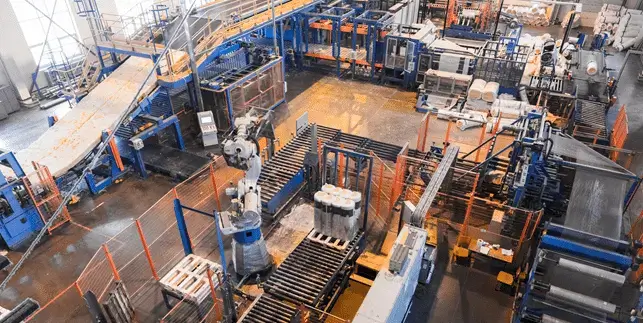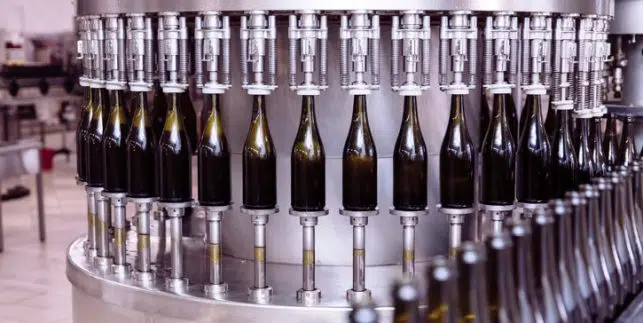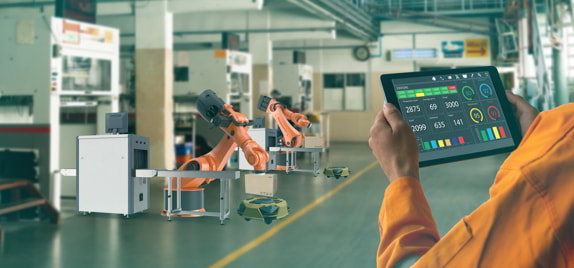The Smart Manufacturing Trends Gaining Momentum Into 2023

With 2022 drawing to a close, the manufacturing industry can look back over a year of significant progress. Industry 4.0 and smart manufacturing trends have continued to gain momentum and show no signs of stopping.
Governments around the world have made new commitments to sustainable manufacturing, and the US National Strategy for Advanced Manufacturing is set to accelerate the development and implementation of advanced manufacturing technologies even further.
The opportunities for manufacturers to adopt smart manufacturing trends grew significantly over 2022 and are poised to continue that growth into 2023. These are some of the key areas in manufacturing that have undergone and continue to see a rapid transformation.
Digital Twins See a Rapid Increase in Adoption
Digital twins are among the most important developments in smart manufacturing. They provide a virtual model of machines and processes, facilitating greater control and insight. These models have excellent synergy with other Industry 4.0 solutions, and more manufacturers are using them today than ever before.
A report from Capgemini Research institute highlights the current adoption and outlook for the expanded use of digital twins in the future. Today, 34% of manufacturers are using digital twins at scale. Key areas of focus include analyzing and predicting energy consumption and emissions. Consumer product manufacturing leads the pack in adoption at 52%.
The research predicts a rapid increase in adoption over the next five years. Implementation is expected to increase by 36% over that time frame. Organizations planning on implementing digital twins cite a number of key reasons why, with 79% citing cost savings benefits, 77% technological advancement, and 57% sustainability.
Manufacturers Take a More Comprehensive Approach to Sustainability
Sustainable manufacturing has been and will continue to be one of the most important topics across the industry. Governments around the world are setting ambitious net-zero emissions timelines, and manufacturers have to adapt quickly to conform to new regulations and industry standards.
A new trend that has emerged is to broaden the focus of sustainable manufacturing policies to include Scope 1, 2, and 3 emissions.
Scope 1 emissions have long been accounted for in manufacturing. They include direct emissions from chemical processes, fuel consumption for process heating, and transportation. Scope 2 emissions further include the impact emissions created upstream to provide electricity used in manufacturing.
Scope 3 emissions have rarely been accounted for in the past and include indirect emissions both upstream and downstream of operations. Materials acquisition, downstream logistics, and product end-of-life emissions are all now being paid more attention to optimize sustainable manufacturing.
This level of scrutiny might sound like a burden on manufacturing operations, but a case study by McKinsey & Company shows otherwise. One automotive OEM they evaluated managed to reduce upstream Scope 3 emissions by 20% over two years. Rather than incurring a cost for the manufacturer, their efforts lead to a 5% reduction in direct material costs.
More Companies Implement Industry 4.0 Solutions
Industry 4.0 adoption has been steadily increasing over the past years and has experienced a recent boost. Data from IoT Analytics shows that 72% of manufacturers already have or are in the process of implanting Industry 4.0 and smart factory initiatives. That’s a staggering increase from 2019, when that value was just 25%.
Not only is the number of manufacturers implementing Industry 4.0 solutions increasing, but so is the maturity of those solutions. The foundation of Industry 4.0, computerization and connectivity, has already been in place in most industries for some time. The next two steps, visibility and transparency, are now being implemented by manufacturers around the world.
The most important trend today is the adoption of the highest levels of Industry 4.0 maturity on the shop floor. Predictive capacity and adaptability are transforming manufacturing operations, with new opportunities to reduce costs, optimize production, and let production teams do their jobs more effectively.
Energy Management Standards Evolve to Meet New Goals
In manufacturing, energy management has often been given less attention than materials management and other areas. However, manufacturers are now taking notice of energy management and setting commitments for higher standards of conservation and sustainability.
ISO 50001 has long been the standard framework for energy management in manufacturing. Many manufacturers are now moving beyond those requirements and targeting more ambitious goals. Superior Energy Performance (SEP) 50001 is one such certification provided by the US Industrial Efficiency and Decarbonization Office that includes 3rd party verification of energy savings.
Committing to such standards provides manufacturers with many direct benefits. The US Office of Energy Efficiency & Renewable Energy highlighted the case of the Daimler Truck North America Detroit Plant achieving Platinum Level SEP 50001 Certification. Over ten years of progress, the plant achieved energy cost savings in excess of $37 million, showing the direct benefits of sustainable manufacturing.
Smart Manufacturing Tech Improves Quality Control
New technologies are changing how manufacturers approach quality control on their shop floors. Today, sophisticated Industry 4.0 solutions are already implementing AI and machine learning to improve quality control capabilities to react faster and reduce waste.
Consumer Goods Technology reports that the world’s largest consumer goods company, Proctor & Gamble, is already seeing success with pilot projects focused on quality control in paper towel production. A combination of manufacturing line sensors, machine learning, and predictive analytics is providing improved accuracy in finished sheet lengths, providing a more consistent product.
Predictive Maintenance Moves Into the Spotlight
Unplanned maintenance stops take a heavy toll on the overall efficiency of manufacturing operations around the world. However, predictive maintenance is becoming more common as new technologies emerge to allow manufacturers to identify, analyze, and predict maintenance requirements before they lead to stops.
The Wall Street Journal reports that Frito-Lay has added 4,000 hours per year of manufacturing capacity by implementing innovative predictive maintenance. The unique combination of IoT sensors and AI analytics identifies patterns that lead to stops, allowing for proactive maintenance planning that reduces the number of unplanned stops.
Keeping Up With the Rapid Pace of Smart Manufacturing
These are just a few of the areas in which manufacturing is advancing at a rapid pace. New technologies and solutions will only continue to develop as we move into the new year and beyond. To keep up with these trends and ensure that your operations remain competitive in a rapidly changing landscape, you need a partner that can provide the solution and support you need.
Matics provides the latest in Industry 4.0 production analysis, insight, and work management through our Real-time Operational Intelligence (RtOI) platform. You can bring your shop floor to the forefront of Industry 4.0 and enjoy continued support and development to stay there. Schedule a demo of Matics RtOI for your team today to find out more.





